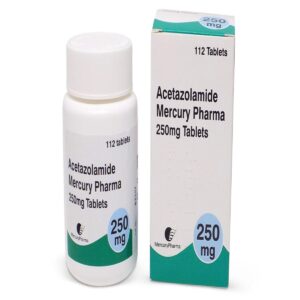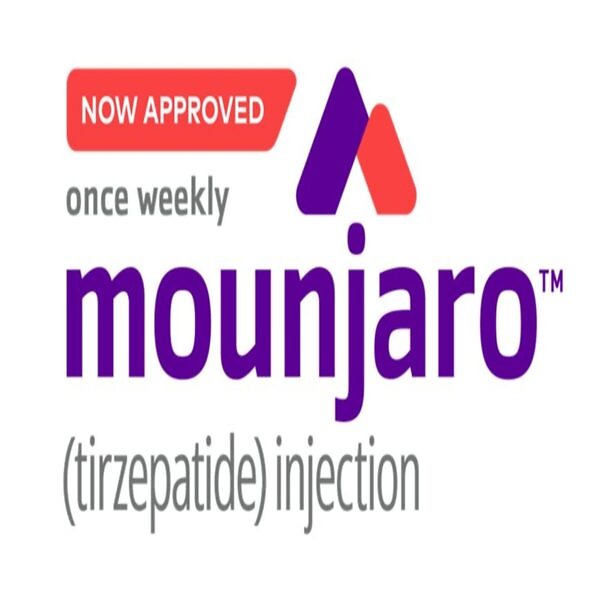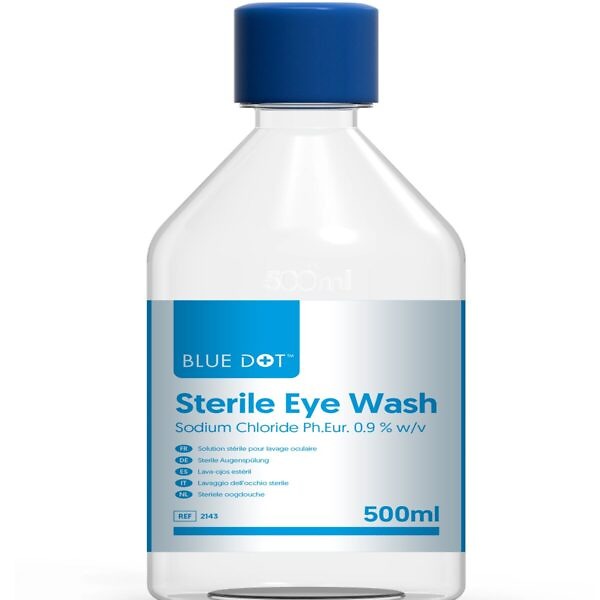Sandrena Gel 0.5mg, 28 Sachets
HRT gel containing the female hormone oestrogen
- Relief of symptoms occurring after menopause
- HRT gel containing the female hormone oestrogen
£14.50
CompareCompare- Relief of symptoms occurring after menopause
- HRT gel containing the female hormone oestrogen
- Description
- Additional Information
- Brand
- How To Use
- Product Details
- Side Effects
- Ingredients
- How to Store
- Patient Information leaflet
- Reviews (0)
- Questions & Answers
Sandrena Gel 0.5mg, 28 Sachets
Sandrena Gel 0.5mg is a Hormone Replacement Therapy (HRT). It contains the female hormone oestrogen.
Sandrena gel 1mg is used for:
Relief of symptoms occurring after menopause
During the menopause, the amount of the oestrogen produced by a woman’s body drops. This can cause symptoms such as hot face, neck and chest (“hot flushes”). Sandrena alleviates these symptoms after menopause. You will only be prescribed Sandrena if your symptoms seriously hinder your daily life.
| Brand | |
|---|---|
Brand
Sandrena
How To Use
How To Use
How to use Sandrena
Always use this medicine exactly as your doctor or pharmacist has told you. Check with your doctor or pharmacist if you are not sure.
When to start using Sandrena
You can start using Sandrena straight away if:
- You have never used HRT before
- You are changing over from a period-free HRT.
Wait for your period to end if:
- You are changing over from another type of HRT where you have a period.
If you have not had your womb removed, your doctor will normally also prescribe another medicine containing the hormone progestagen. This is normally a tablet taken for 12 to 14 days in each monthly cycle. After each course of progestagen you will usually have a withdrawal bleed, like a period.
How much to use
Sandrena comes in sachets of 0.5 mg estradiol in 0.5 g of gel, or in sachets of 1 mg estradiol in 1g of gel.
Each pack of Sandrena 0.5 mg gel contains only 0.5 g sachets.
Each pack of Sandrena 1 mg gel contains only 1 g sachets.
Use the amount of Sandrena gel that your doctor has prescribed. Your doctor will aim to prescribe the lowest dose to treat your symptom for as short as necessary. Speak to your doctor if you think this dose is too strong or not strong enough.
- The recommended dose is between 0.5 mg and 1.5 mg of estradiol a day.
- Use the following number of 0.5 g or 1 g sachets depending on the dose, and the pack size prescribed by your doctor:
For a 0.5 mg daily dose: Use one 0.5 g sachet.
For a 1 mg daily dose: There are two options. Use one 1 g sachet or use two 0.5 g sachets.
For a 1.5 mg daily dose: There are two options. Use three 0.5 g sachets or use one 0.5 g sachet with one 1 g sachet.
If you are also taking progestagen tablets, take them as your doctor has told you. You will normally have a withdrawal bleed after each course of progestagen.
How to apply the gel
Sandrena should be rubbed gently on dry and clean skin. It should not be swallowed.
Where to apply the gel
- Do not apply the gel to your breasts, face or on irritated skin.
- Apply the gel to your lower body or thighs.
- Apply the gel to a different side of your body each day.
Follow these instructions:
1. Apply the gel once a day to the skin on your lower body or thighs.
2. Spread the gel over an area 1–2 times the size of your hand.
3. Allow the gel to dry for a few minutes.
4. Wash your hands after applying the gel. Avoid contact of the gel with your eyes. The gel may irritate your eyes.
5. Do not wash the area where you have applied the gel for at least one hour.
If you need to have surgery
If you are going to have surgery, tell the surgeon that you are using Sandrena. You may need to stop using Sandrena about 4 to 6 weeks before the operation to reduce the risk of a blood clot (see section 2, Blood clots in a vein). Ask your doctor when you can start using Sandrena again.
If you use more Sandrena gel than you should
If you use more gel than you should, talk to your doctor or pharmacist.
You may feel bloated, anxious or irritable, or your breasts may feel tender. Nausea, vomiting and withdrawal bleeding may also occur in some women.
Overdosage is unlikely with transdermal application. Treatment is symptomatic. The gel should be washed. The symptoms disappear when the treatment is stopped or when the dose is reduced.
If you swallow Sandrena
If you swallow Sandrena there is no need to worry. However, you should talk to your doctor.
If you forget to use Sandrena
- Apply the missed dose when you remember, unless you are more than 12 hours late.
- If you are more than 12 hours late just skip the missed dose.
- Missed doses may cause some bleeding between your periods. This is called breakthrough bleeding.
If you stop using Sandrena
Keep using this medicine as prescribed by your doctor. Keep using Sandrena, even if you seem to be better. If you stop too early or too suddenly your problem may return.
If you have any further questions on the use of this medicine, ask your doctor or pharmacist.
Product Details
Product Information
What you need to know before you use Sandrena
Medical history and regular check-ups
The use of HRT carries risks which need to be considered when deciding whether to start taking it, or whether to carry on taking it.
The experience in treating women with a premature menopause (due to ovarian failure or surgery) is limited. If you have a premature menopause the risks of using HRT may be different. Please talk to your doctor.
Before you start (or restart) HRT, your doctor will ask about your own and your family’s medical history. Your doctor may decide to perform a physical examination. This may include an examination of your breasts and/or an internal examination, if necessary.
Once you have started on Sandrena you should see your doctor for regular check-ups (at least once a year). At these check-ups, discuss with your doctor the benefits and risks of continuing with Sandrena.
Regularly check your breasts for any changes (see ‘Breast cancer’ below). Go for regular breast screening, as recommended by your doctor.
Do not use Sandrena:
if any of the following applies to you. If you are not sure about any of the points below, talk to your doctor before using Sandrena.
Do not use Sandrena:
- if you have or have ever had breast cancer, or if you are suspected of having it
- if you have cancer which is sensitive to oestrogens, such as cancer of the womb lining (endometrium), or if you are suspected of having it
- if you have any unexplained vaginal bleeding
- if you have excessive thickening of the womb lining (endometrial hyperplasia) that is not being treated
- if you have or have ever had a blood clot in a vein (thrombosis), such as in the legs (deep venous thrombosis) or the lungs (pulmonary embolism)
- if you have a blood clotting disorder (such as protein C, protein S, or antithrombin deficiency)
- if you have or recently have had a disease caused by blood clots in the arteries, such as a heart attack, stroke or angina
- if you have or have ever had a liver disease and your liver function tests have not returned to normal
- if you have a rare blood problem called “porphyria” which is passed down in families (inherited)
- if you are allergic to estradiol or any of the other ingredients of this medicine Sandrena (listed in section 6).
If any of the above conditions appear for the first time while using Sandrena, stop using it at once and consult your doctor immediately.
Warnings and precautions
Talk to your doctor or pharmacist before using Sandrena. Tell your doctor if you have ever had any of the following problems, before you start the treatment, as these may return or become worse during treatment with Sandrena. If so, you should see your doctor more often for check-ups:
- fibroids inside your womb
- growth of womb lining outside your womb (endometriosis) or a history of excessive growth of the womb lining (endometrial hyperplasia)
- increased risk of developing blood clots (see “Blood clots in a vein (thrombosis)”)
- increased risk of getting a oestrogen-sensitive cancer (such as having a mother, sister or grandmother who has had breast cancer)
- high blood pressure
- a liver disorder, such as a benign liver tumour
- diabetes
- gallstones
- migraine or severe headaches
- a disease of the immune system that affects many organs of the body (systemic lupus erythematosus, SLE)
- epilepsy
- asthma
- a disease affecting the eardrum and hearing (otosclerosis)
- a very high level of fat in your blood (triglycerides)
- fluid retention due to cardiac or kidney problems
- hereditary angioedema.
Stop using Sandrena and see a doctor immediately
If you notice any of the following when taking HRT:
- any of the conditions mentioned in the “Do not use Sandrena” section
- yellowing of your skin or the whites of your eyes (jaundice). These may be signs of a liver disease
- a large rise in your blood pressure (symptoms may be headache, tiredness, dizziness)
- migraine-like headaches which happen for the first time
- if you become pregnant
- if you notice signs of a blood clot, such as:
- painful swelling and redness of the legs
- sudden chest pain
- difficulty in breathing
For more information, see ‘Blood clots in a vein (thrombosis)’.
Note: Sandrena is not a contraceptive. If it is less than 12 months since your last menstrual period or you are under 50 years old, you may still need to use additional contraception to prevent pregnancy. Speak to your doctor for advice.
HRT and cancer
Excessive thickening of the lining of the womb (endometrial hyperplasia) and cancer of the lining of the womb (endometrial cancer)
Taking oestrogen-only HRT will increase the risk of excessive thickening of the lining of the womb (endometrial hyperplasia) and cancer of the womb lining (endometrial cancer).
Taking a progestagen in addition to oestrogen for at least 12 days of each 28 day cycle protects you from this extra risk. So your doctor will prescribe a progestagen separately if you still have your womb. If you have had your womb removed (a hysterectomy), discuss with your doctor whether you can safely take this product without a progestagen.
In women who still have a womb and who are not taking HRT, on average, 5 in 1,000 will be diagnosed with endometrial cancer between the ages of 50 and 65.
For women aged 50 to 65 who still have a womb and who take oestrogen-only HRT, between 10 and 60 women in 1,000 will be diagnosed with endometrial cancer (i.e. between 5 and 55 extra cases), depending on the dose and for how long it is taken.
Unexpected bleeding
If your doctor has prescribed you progestagen tablets in addition to Sandrena, you will usually have a bleed once a month (so-called withdrawal bleed). But, if you have unexpected bleeding or drops of blood (spotting) besides your monthly bleeding, which:
- carries on for more than the first 6 months
- starts after you have been taking Sandrena more than 6 months
- carries on after you have stopped using Sandrena
see your doctor as soon as possible.
Breast cancer
Evidence suggests that taking combined oestrogen-progestagen and possibly also oestrogen-only HRT increases the risk of breast cancer. The extra risk depends on how long you take HRT.
The additional risk becomes clear within a few years. However, it returns to normal within a few years (at most 5) after stopping treatment.
For women who have had their womb removed and who are using oestrogen-only HRT for 5 years, little or no increase in breast cancer risk is shown.
Compare
Women aged 50 to 79 who are not taking HRT, on average, 9 to 17 in 1,000 will be diagnosed with breast cancer over a 5-year period. For women aged 50 to 79 who are taking oestrogen-progestagen HRT over 5 years, there will be 13 to 23 cases in 1,000 users (i.e. an extra 4 to 6 cases).
- Regularly check your breasts. See your doctor if you notice any changes such as:
- dimpling of the skin
- changes in the nipple
- any lumps you can see or feel
Additionally, you are advised to join mammography screening programs when offered to you. For mammogram screening, it is important that you inform the nurse/healthcare professional who is actually taking the x-ray that you use HRT, as this medication may increase the density of your breasts which may affect the outcome of the mammogram. Where the density of the breast is increased, mammography may not detect all lumps.
Ovarian cancer
Ovarian cancer is rare – much rarer than breast cancer. The use of oestrogen-only or combined oestrogen-progestagen HRT has been associated with a slightly increased risk of ovarian cancer.
The risk of ovarian cancer varies with age. For example, women aged 50 to 54 who are not taking HRT, about 2 women in 2,000 will be diagnosed with ovarian cancer over a 5-year period. For women who have been taking HRT for 5 years, there will be about 3 cases per 2,000 users (i.e. about 1 extra case).
Effects of HRT on heart and circulation
Blood clots in a vein (thrombosis)
The risk of blood clots in the veins is about 1.3 to 3 times higher in HRT users than in non-users, especially during the first year of taking it.
Blood clots can be serious, and if one travels to the lungs, it can cause chest pain, breathlessness, fainting or even death.
You are more likely to get a blood clot in your veins as you get older and if any of the following applies to you. Inform your doctor if any of these situations applies to you:
- you are unable to walk for a long time because of major surgery, injury or illness (see also section 3, If you need to have surgery)
- you are seriously overweight (BMI > 30 kg/m2)
- you have or have had any blood clotting problem that needs long-term treatment with a medicine used to prevent blood clots
- if any of your close relatives has ever had a blood clot in the leg, lung or another organ
- you have systemic lupus erythematosus (SLE)
- you have cancer.
For signs of a blood clot, see “Stop using Sandrena and see a doctor immediately”.
Compare
Looking at women in their 50s who are not taking HRT, on average, over a 5-year period, 4 to 7 in 1,000 would be expected to get a blood clot in a vein.
For women in their 50s who have been taking oestrogen-progestagen HRT for over 5 years, there will be 9 to 12 cases in 1,000 users (i.e. an extra 5 cases).
For women in their 50s who have had their womb removed and have been taking oestrogen-only HRT for over 5 years, there will be 5 to 8 cases in 1,000 users (i.e. 1 extra case).
Heart disease (heart attack)
There is no evidence that HRT will prevent a heart attack.
Women over the age of 60 years who use oestrogen-progestagen HRT are slightly more likely to develop heart disease than those not taking any HRT.
For women who have had their womb removed and are taking oestrogen-only therapy there is no increased risk of developing a heart disease.
Stroke
The risk of getting a stroke is about 1.5-times higher in HRT users than in non-users. The number of extra cases of stroke due to use of HRT will increase with age.
Compare
Looking at women in their 50s who are not taking HRT, on average, 8 in 1,000 would be expected to have a stroke over a 5-year period. For women in their 50s who are taking HRT, there will be 11 cases in 1,000 users, over 5 years (i.e. an extra 3 cases).
Other conditions
- HRT will not prevent memory loss. There is some evidence of a higher risk of memory loss in women who start using HRT after the age of 65. Speak to your doctor for advice.
- Women with a tendency to discoloration of the skin (chloasma) should minimise exposure to the sun or ultraviolet radiation whilst using Sandrena.
Other medicines and Sandrena
Tell your doctor or pharmacist if you are taking, have recently taken or might take any other medicines, including medicines obtained without a prescription, herbal medicines or other natural products.
Some medicines may interfere with the effect of Sandrena. This might lead to irregular bleeding.
This applies to the following medicines:
- Medicines for epilepsy (such as phenobarbital, phenytoin and carbamazepine)
- Medicines for tuberculosis (such as rifampicin, rifabutin)
- Medicines for HIV infection (such as nevirapine, efavirenz, ritonavir and nelfinavir)
- Herbal remedies containing St. John’s wort (Hypericum perforatum).
Laboratory tests
If you need a blood test, tell your doctor or the laboratory staff that you are using Sandrena, because this medicine can affect the results of some tests.
Pregnancy, breast-feeding and fertility
Sandrena is for use in postmenopausal women only. If you become pregnant, stop using Sandrena and contact your doctor.
Driving and using machines
No studies on the effects of Sandrena on the ability to drive and use machines have been performed.
Sandrena contains propylene glycol
Sandrena contains propylene glycol, which may cause skin irritation.
Side Effects
Side Effects
Possible side effects
Like all medicines, this medicine can cause side effects, although not everybody gets them.
Stop using the gel and see your doctor straight away, if you notice any of the following serious side effects:
- your blood pressure rises
- your skin or the whites of your eyes go yellow (jaundice)
- you suddenly have migraine-type headaches (see section 2)
- you have signs of a blood clot (see section 2)
- you get any of the problems listed in section 2.
The following diseases are reported more often in women using HRT compared to women not using HRT:
- breast cancer
- abnormal growth or cancer of the lining of the womb (endometrial hyperplasia or cancer)
- ovarian cancer
- blood clots in the veins of the legs or lungs (venous thromboembolism)
- heart disease
- stroke
- probable memory loss if HRT is started over the age of 65.
For more information about these side effects, see section 2.
During the first few months of treatment, breakthrough bleeding, spotting and breast tenderness or enlargement can occur. These are usually temporary and normally disappear after continued treatment.
Other side effects
Common (may affect up to 1 in 10 people):
- itching of the skin, rash, pain, increased sweating, swollen feet and lower legs
- breasts become tender or painful
- increase or decrease in your weight
- headache, dizziness
- tummy pains, feeling sick or being sick, flatulence
- bleeding or spotting, menstrual disorder
- depression, nervousness, lethargy
- hot flushes.
Uncommon (may affect up to 1 in 100 people):
- changes to sex drive and mood, anxiety, sleeplessness, apathy, emotional instability, impaired concentration,euphoria, agitation
- migraine, delusion, trembling
- visual impairment, dry eye
- hypertension, superficial phlebitis, purpura
- shortness of breath, rhinitis
- benign breast or endometrial tumour
- increased appetite, high level of cholesterol in the blood
- increased heart rate
- constipation, digestive disturbance, diarrhoea, rectal disorder
- acne, alopecia, dry skin, nail disorder, skin nodule, excessive growth of hair, urticaria (a raised, itchy rash that appears on the skin), painful reddish skin nodules (erythema nodosum)
- joint disorders, muscle cramps
- increased urinary frequency/urgency, loss of bladder control, urinary tract infection, urine discoloration, haematuria
- tender or swollen breast, abnormal growth of the lining of the womb, uterine disorder
- tiredness, abnormal laboratory test, weakness, fever, flu syndrome, general feeling of ill health
- allergic (hypersensitivity) reaction.
Rare (may affect up to 1 in 1,000 people):
- venous thromboembolism
- alterations in liver function and biliary flow
- contact lense intolerance
- menstrual pain
- pre-menstrual like syndrome.
Adverse events reported post marketing with frequency not known (cannot be estimated from the available data):
- uterine fibroids
- hereditary angioedema
- cerebral circulatory disorder
- , bloating
- liver disease causing yellowing of the skin
- contact rash, eczema
If you have any of these side effects tell your doctor. The doctor may decide to stop your treatment for a while.
Dementia
HRT will not prevent memory loss. There is some evidence of a higher risk of memory loss in women who start using HRT after the age of 65. Speak to your doctor for advice.
The following side effects have been reported with other HRTs:
- gall bladder disease
- probable dementia over the age of 65
- various skin disorders:
- discolouration of the skin especially of the face or neck known as “pregnancy patches” (chloasma)
- rash with target-shaped reddening or sores (erythema multiforme)
- purpura due to loss of integrity or function of the vessels (vascular purpura)
Reporting of side effects
If you get any side effects, talk to your doctor or pharmacist. This includes any possible side effects not listed in this leaflet. You can also report side effects directly via the Yellow Card Scheme at: www.mhra.gov.uk/yellowcard or search for MHRA Yellow Card in the Google Play or Apple App Store.
Ingredients
Ingredients
- The active substance is estradiol. There is 0.5mg of estradiol in each sachet.
- The other ingredients are Carbopol 974P, trolamine, propylene glycol, alcohol and purified water.
Sandrena gel is a smooth alcohol-based gel.
How to Store
How to Store
Keep this medicine out of the sight and reach of children.
Do not use this medicine after the expiry date which is stated on the carton and sachet after “use by”.
Store the gel at room temperature (below 25°C).
Do not throw away any medicines via wastewater or household waste. Ask your pharmacist how to throw away medicines you no longer use. These measures will help protect the environment.
Patient Information leaflet
Click here for the Patient Information leaflet
Please read before using the product
Only logged in customers who have purchased this product may leave a review.
Questions and answers of the customers
There are no questions yet, be the first to ask something for this product.
Other Products From This Seller
- Validated for 2-8°C for 15 to 20hrs*
- Perfect for long haul flights
- Carries pens, bottles, vials and syringes
- Integrated digital thermometer
- Manufactured from excellent quality materials
£54.50
- Availability: in stock
Steglatro Tablets – Ertugliflozin Tablets available in 2 strengths:
- Steglatro 5mg Tablets – Ertugliflozin 5mg Tablets
- Steglatro 15mg Tablets – Ertugliflozin 15mg Tablets
£49.50
- Availability: in stock
Original price was: £43.20.£39.50Current price is: £39.50.
Ursodeoxycholic Acid Tablets 250mg – Cholurso Tablets, 60 Tablets Introducing Cholurso Tablets the brand name of Ursodeoxycholic Acid Tablets 250mg – Your Solution for Gallstone Management and Liver Health Ursodeoxycholic Acid 250mg Tablets is a cutting-edge pharmaceutical formulation designed to positively influence bile composition, making it a versatile solution for various health concerns. Ursodeoxycholic Acid, […]
Learn MoreOriginal price was: £43.20.£39.50Current price is: £39.50.
- Availability: in stock
£156.00 – £210.00
Please note you need insulin pen needles to use Mounjaro Injection
Mounjaro Injection – Tirzepatide Injection, 4 Pre-filled Pens
Available in 6 strengths:
- Mounjaro 2.5mg Injection
- Mounjaro 5mg Injection
- Mounjaro 7.5mg Injection
- Mounjaro 10mg Injection
- Mounjaro 12.5mg Injection
- Mounjaro 15mg Injection
Learn More
£156.00 – £210.00
- Availability: in stock
Timoptol LA Gel – Timolol Eye Gel is available in 2 strengths
- Timoptol LA 0.5% Gel
- Timoptol LA 0.25% Gel
£7.50
- Availability: in stock
Original price was: £43.50.£39.75Current price is: £39.75.
One-Alpha Drops 2mcg/1ml – Alfacalcidol Drops 2mcg/1ml
Learn MoreOriginal price was: £43.50.£39.75Current price is: £39.75.
- Availability: in stock
Original price was: £5.99.£5.39Current price is: £5.39.
Ideal for irrigating and cleansing the eye, or a wound
Learn MoreOriginal price was: £5.99.£5.39Current price is: £5.39.
- Availability: in stock
Ultimate Surefit Erection Ring Set 15222 – Constrictor Rings For Erectile Dysfunction Experience Confidence and Pleasure with the Ultimate Surefit maintenance ring set – Your Key to Intimate Well-being Introducing the Ultimate Surefit Erection Ring, a premium solution meticulously designed for those seeking to overcome the challenges of erectile dysfunction. Crafted with precision and comfort […]
Learn More£58.50
- Availability: in stock
Original price was: £62.50.£56.49Current price is: £56.49.
SureEase Erection Rings 15085 – Constrictor Rings For Erectile Dysfunction Revitalize Your Intimate Moments with SureEase Erection Rings – Precision for Confidence and Pleasure SureEase Erection Rings are the discreet yet powerful solution designed to rekindle confidence and elevate pleasure for individuals facing challenges with erectile dysfunction. Crafted with precision, these constrictor rings provide targeted […]
Learn MoreOriginal price was: £62.50.£56.49Current price is: £56.49.
- Availability: in stock
£279.00 – £289.00
SomaErect Response II is available in 2 models:
- SomaErect Response II 15019
- SomaErect Response II XL 15888
£279.00 – £289.00
- Availability: in stock



















Reviews
There are no reviews yet.